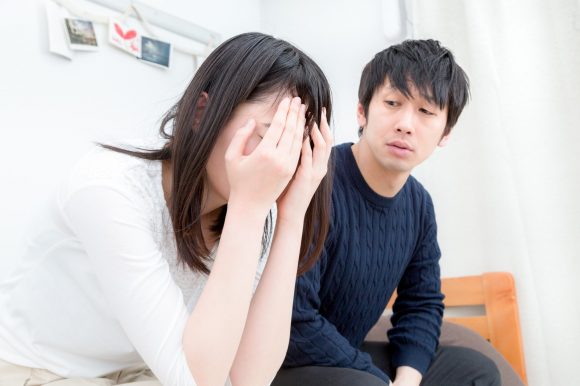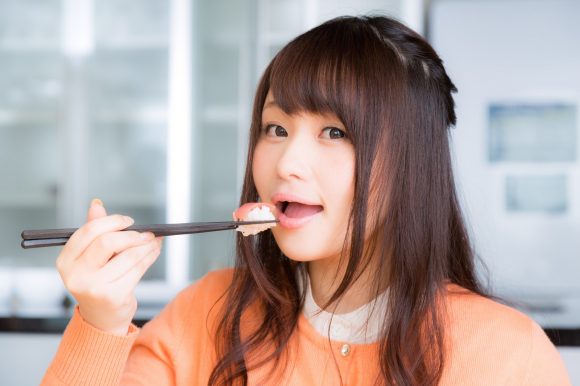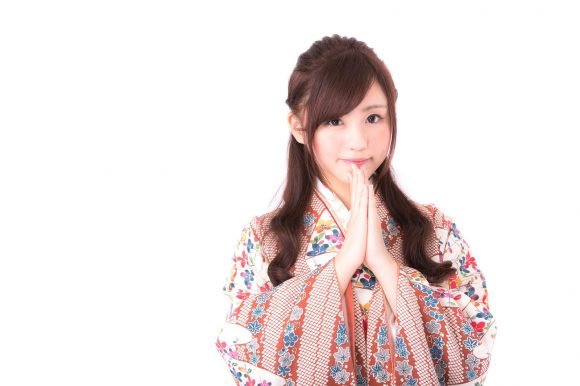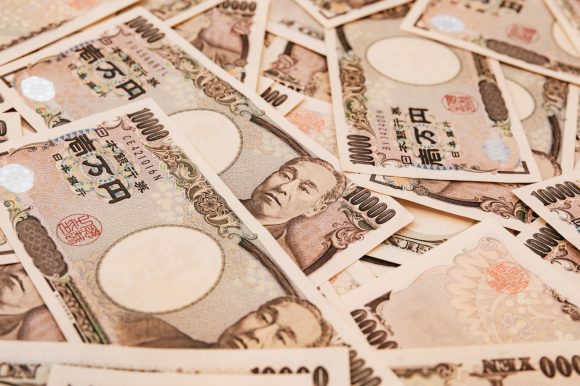
No pain relief, umbilical cord keepsakes, modesty curtains and a sushi free-for-all – what’s it really like to have a baby in Japan?
Japanese women aren’t having a whole lot of babies these days, with the country facing population decline as a result of the number of births being consistently below the replacement threshold, with little sign of improving. In fact, the birth rate in 2018 was the lowest since records began. Certain factors contributing to this lack of babies include gender wage-gap issues, long working hours, inflexible work-life balance for mothers, and the high cost of raising a child. But what’s in store for those women who do take the plunge into motherhood?
One of our foreign staff writers from the U.K. recently had their first baby in Japan and had plenty to report regarding the experience – having a bouncing bambino can be a bamboozling experience at the best of times for first-time mothers, and especially so when you’re a Westerner in a foreign country like Japan, giving birth in a hospital that doesn’t cater specifically to expats or provide much English-language support. But it also gives a rare glimpse into a world that is shrouded in secrecy and ancient tradition, where men are largely excluded, and where pain relief in labor is considered an extravagant luxury.
The following is a list of six things that surprised our reporter the most about having a baby in Japan.
1. Pain relief in labor is not a common thing
When our reporter found out she was expecting, one of the first and most shocking revelations about childbirth in Japan was the lack of any kind of pain relief offered in labor. In Japan, which prides itself on its “gaman” (endure/bear it) culture, most women don’t even consider the possibility of pain relief in labor. Which means options like laughing gas (“gas and air”) of the variety that is popular in the U.K., or any IV or epidural anaesthetic aren’t as readily available as they are in the west.
However, in recent years “mutsuu bunben” or “painless delivery”, aka an epidural (a plastic tube inserted into the spine to provide a steady level of anaesthesia to numb the lower half of the body throughout labor and delivery) has started to gain traction, although only a handful of hospitals in the country offer this. Opting for an epidural is considered a luxury and as such, comes with a luxury price tag. While prices vary between hospitals, you can expect to pay around 100,000 yen (US$896) out of pocket. And that’s if your baby is considerate enough to arrive during standard Monday to Friday, nine-to-five hours, since most places won’t offer an epidural if your baby decides to be born out of hours, due to a lack of trained anaesthetists on staff. Japan’s attitude towards epidurals is in stark contrast to countries like France, where, for example, 83.8 per cent percent of women used an epidural in 2016. In the same year in Japan, the rate was 5.2 per cent.
If you’re wondering how our reporter reacted to this, she had this to say:
“I was really worried about having an unmedicated delivery, especially because I was concerned that my level of Japanese ability would fail me and I would be too distracted by the pain to communicate properly with my doctor and midwives. Luckily, the first doctor I saw understood my concerns and recommended a hospital in Saitama Prefecture (I don’t live within easy access of Tokyo) which actually offered 24/7 epidurals – it made me feel better to have that option available, as I would have had in my home country. And since in Japan you’re supposed to confirm your delivery hospital at least five months before birth, it was a relief to be able to make an early decision I felt comfortable with.”
2. The Man Behind the Curtain
With a largely patriarchal society like Japan, it shouldn’t come as a surprise that the majority of OBGYNs in Japan are male. But what did come as a surprise to our reporter was the lengths that are gone to to preserve the dignity of female patients during sensitive exams. As our reporter explains:
“I was baffled when the time came for a pelvic exam and I was shown to a small side room with what looked like a dentist’s chair and a curtain hanging down right in front of it. When I sat on the chair, it lifted, rotated and swiveled so that the lower half of my body was sticking through the curtain. Moments later, the (male) doctor I had been conversing with moments before in the other room addressed me from beyond the curtain before performing the exam. Following that, the chair lowered, rotated and swiveled again, and I returned to the main room to discuss the findings of the exam with the same doctor. This happened for every examination.”
Our reporter wasn’t sure in the end whether or not the curtain was for the benefit of sparing the patient or doctor‘s blushes, but regardless, if you have any kind of gynecological procedure in Japan, including pap smear tests, you can expect to get the full curtain treatment. Curious, we asked our reporter what happened during her delivery experience – surely you don’t have to give birth with your lower half sticking out behind a curtain?
“By the time you get to that point all modesty is off the table and the doctor handles the delivery in full view of both expectant mother and anyone else in the room”.
The more you know.
3. You can eat all the sushi, but you can’t gain too much weight
Western mothers are often given a long list of foods to avoid, including soft cheeses, deli meats, and sushi. But in Japan, no doctor would think of sanctioning sushi, and instead women are encouraged to eat a wide variety of foods to ensure adequate nutrition to the baby. One thing doctors are strict on, however, is weight gain – women are encouraged to keep their weight gain in check, and they will be weighed at each and every checkup (which is monthly until the final month, when it becomes weekly) and are often scolded for gaining too much weight. Concerned, our reporter asked the doctors how much weight gain was allowed.
“They told me, ‘try to keep it within five kilograms’. I checked online to see how much weight gain is recommended in my home country, and it’s anything from 11-16 kilograms. I ended up gaining 15 kilograms altogether and was scolded once by a midwife, which made me feel terrible. However, I lost almost all of the weight right after delivery and had a healthy-weight baby.”
One theory as to why weight gain during pregnancy is an issue in Japan is that having a smaller baby can reduce the risk of needing a caesarean delivery, but the strict weight-watching policy has begun to be re-examined in recent years as the birth weight of Japanese infants has been decreasing year by year.
4. You can’t question the doctor – ever
In Japanese society, no one is more respected than a doctor, or sensei, and questioning one’s doctor is something that is simply not done. While doctors in Japan who cater to Westerners are generally more understanding about patients asking for clarification or explanation, regular Japanese doctors often won’t explain anything to their patients. Making demands is also frowned upon, and expectant mothers in Japan are often happy to simply follow instructions and leave all decisions up to their doctor, such is their trust in the medical profession and doctors in general. Our reporter says:
“A lot of my friends who’ve had babies in my home country were able to make “birth plans” and communicate their desire for things like delayed cord clamping, immediate skin-to-skin for an hour after birth, being able to choose the delivery position, and even filming the birth. But I quickly realised that in Japan the doctor makes the decisions and you do not do anything that would distract them during delivery.”
Indeed, it is only in recent years that “tachiai bunben” or having one’s husband present in the delivery room, has begun to be allowed. Our reporter says:
“I had to specifically request to have my husband present and luckily my doctor was okay with it, although my husband was asked to step outside at multiple points during the delivery when the doctor did not want to be distracted, and was only allowed to stand at the head of the bed behind me. We were also told not to take pictures or video at any point. Also, while I had heard that episiotomies (cutting of the perineum to help the baby’s head emerge) are standard in Japan, I was told that they were only performed at the doctor’s discretion. Ultimately, I did end up having an episiotomy as the doctor felt my baby’s head was too big to come out naturally.”
While placing total trust in one’s doctor may seem antithetical to the Western custom of second opinions, Japan has some of the lowest rates of infant mortality and maternal mortality in the world, so no wonder Japanese moms feel at ease letting the doc call the shots.
5. Traditions abound
Upon registering a pregnancy in Japan, you’ll be given an armload of pamphlets and leaflets containing a plethora of information, some more useful than others. Among these documents, you’ll probably find a chart showing you when the appropriate Inu no Hi, or Day of the Dog, is. See, tradition has it that since dogs have relatively easy births compared to humans, it’s lucky to go to a shrine and pray for a safe birth on the designated Day of the Dog during one’s fifth month of pregnancy. You can also pick up an amulet for safe delivery at the same time! Another tradition that might weird some people out is the keeping of the baby’s umbilical cord, which surprised our reporter:
“I was somewhat taken aback when I was presented with a little wizened and bloody piece of the umbilical cord and a special wooden box to keep it in. The midwife told me that traditionally parents keep the stump that falls off the baby’s belly button later on, but since there was a risk of the stump falling off in a diaper or something or otherwise getting lost, the hospital has a policy of specially cutting a piece off right after birth to give to mothers to keep. Apparently, the cord symbolizes the bond between mother and child and should be cared for carefully. I haven’t quite decided what to do with mine, but now I feel that I really can’t throw it away…”
Moms are also given some other advice which might sound strange to Western ears, including keeping one’s belly warm with a belly band, and keeping one’s ankles and feet covered with socks at all times. One other major pregnancy tradition is satogaeri shussan, or returning to one’s parents’ home for the first month after birth so that mom and baby can bond while someone else takes care of mom and handles household tasks like cooking, laundry and cleaning for her. Also, during that first postpartum month, many mothers refrain from leaving the house either with or without their babies, to prevent either mom or baby from getting sick.
6. It’s really freaking expensive
Since pregnancy is a natural state and not considered a medical condition in Japan, it isn’t covered under the national health service. As such, having a baby can be an expensive affair. However, there are so many factors that go into the cost of having a baby, including the specific medical treatment one receives – there are different rates for a natural birth and a caesarian, induction, epidural, episiotomy, vacuum extraction, etc, plus the length of the hospital stay (it could be longer in the case of a caesarean). However, the government is kind enough to provide a nice lump sum payback of 420,000 yen, known as the Childbirth and Childcare Lump Sum Grant. The government also provides jidou te-ate, or child allowance, at 15,000 yen per child per month until the age of three, and then 10,000 per child per month until the third year of junior high. However, our reporter says:
“I was concerned about the high cost of having a baby in Japan, especially as I knew that giving birth in my home country would have been so much cheaper. That wasn’t an option, though, and I would still have had to pay for return flights home. Also, another reason I opted to give birth in a non-English speaking hospital is that several of my friends who are expat moms and did give birth in English-speaking hospitals in Tokyo told me how expensive they were! I ended up paying around 200,000 yen out of pocket for my specific birth and hospital stay, and not only did I end up paying much less than my friends, I also had a wonderful experience as the hospital I chose was really luxurious!”
Wait, what? Hospital? Luxurious?
“I stayed at a maternity hospital which offered all kinds of complimentary services like: massages and beauty treatments; Japanese, Chinese and French full course meals; private rooms with ensuites; and tons of free baby goods!”
So, what was our reporter’s final verdict on having a baby in Japan?
“Overall I had a really positive experience – the medical professionals I saw were all kind and helpful, and I never felt TOO overwhelmed or out of my depth despite having to struggle along in Japanese – my Japanese-native husband was a huge help of course. Ultimately, there will always be things I wish could have gone differently, but I consider myself very lucky overall.”
Keep checking SoraNews24 to read about our reporter’s experience in a luxury maternity hospital, coming up soon!
Featured image: Pakutaso
● Want to hear about SoraNews24’s latest articles as soon as they’re published? Follow us on Facebook and Twitter!
References:
Number of babies born in Japan in 2018: Japan Times
Number of epidurals in France in 2016: NCBI
Number of epidurals in Japan in 2016: Mainichi Shimbun
Birth weight of Japanese infants: NCBI
Rates of infant mortality by country: IndexMundi
Rates of maternal mortality by country: IndexMundi







 Children’s anime PreCure features magical girl actually giving birth to a child in series finale
Children’s anime PreCure features magical girl actually giving birth to a child in series finale Woman delivers baby on passenger train just outside of Tokyo
Woman delivers baby on passenger train just outside of Tokyo Thai mother endures more than 30 hours of labor to deliver stillborn baby in the name of science
Thai mother endures more than 30 hours of labor to deliver stillborn baby in the name of science 5 powerful reasons to be a woman in Japan 【Women in Japan Series】
5 powerful reasons to be a woman in Japan 【Women in Japan Series】 UNICEF: Japan safest country to have a baby
UNICEF: Japan safest country to have a baby How to order snacks on a Shinkansen bullet train in Japan
How to order snacks on a Shinkansen bullet train in Japan Japan’s new difficult-to-drink-from beer glass protects your liver, but it’s a brutal experience
Japan’s new difficult-to-drink-from beer glass protects your liver, but it’s a brutal experience Hello, cosmetics! Clinique teams up with Hello Kitty this summer for first-time collaboration
Hello, cosmetics! Clinique teams up with Hello Kitty this summer for first-time collaboration New Nintendo Lego kit is a beautiful piece of moving pixel art of Mario and Yoshi【Photos】
New Nintendo Lego kit is a beautiful piece of moving pixel art of Mario and Yoshi【Photos】 Nintendo history you can feel – Super NES, N64, and GameCube controllers become capsule toys
Nintendo history you can feel – Super NES, N64, and GameCube controllers become capsule toys Fighting mild hunger with a Japanese soda that turns into jelly in the stomach【Taste test】
Fighting mild hunger with a Japanese soda that turns into jelly in the stomach【Taste test】 High-fashion Totoro cuddle purse is like an elegant stroll in the forest【Photos】
High-fashion Totoro cuddle purse is like an elegant stroll in the forest【Photos】 Burger King Japan suddenly adds Dr. Pepper and Dr. Pepper floats to its menu nationwide
Burger King Japan suddenly adds Dr. Pepper and Dr. Pepper floats to its menu nationwide Video of man kicking, slapping deer in Nara Park outrages Japan【Video】
Video of man kicking, slapping deer in Nara Park outrages Japan【Video】 Demon Slayer: Kimetsu no Yaiba gets new roller coaster attractions and food at Universal Studios Japan
Demon Slayer: Kimetsu no Yaiba gets new roller coaster attractions and food at Universal Studios Japan “The most Delicious Cup Noodle in history” – Japan’s French Cup Noodle wins our heart【Taste test】
“The most Delicious Cup Noodle in history” – Japan’s French Cup Noodle wins our heart【Taste test】 Starbucks releases a cute Frappuccino and Unicorn Cake…but not in Japan
Starbucks releases a cute Frappuccino and Unicorn Cake…but not in Japan Kyoto Tower mascot termination reveals dark side behind cute Japanese characters
Kyoto Tower mascot termination reveals dark side behind cute Japanese characters McDonald’s Japan’s Soft Twist Tower: A phantom ice cream only sold at select branches
McDonald’s Japan’s Soft Twist Tower: A phantom ice cream only sold at select branches Yabai Ramen: What makes this Japanese ramen so dangerous?
Yabai Ramen: What makes this Japanese ramen so dangerous? Finally! Nintendo Japan expands Switch 8-bit controller sales to everybody, Online member or not
Finally! Nintendo Japan expands Switch 8-bit controller sales to everybody, Online member or not Japanese government wants to build luxury resorts in all national parks for foreign tourists
Japanese government wants to build luxury resorts in all national parks for foreign tourists To combat declining birth rate, Japan to begin offering “Breeding Visas” to foreigners
To combat declining birth rate, Japan to begin offering “Breeding Visas” to foreigners 10 things you should buy at 7-Eleven in Japan
10 things you should buy at 7-Eleven in Japan Studio Ghibli releases anime heroine cosplay dresses that are super comfy to wear
Studio Ghibli releases anime heroine cosplay dresses that are super comfy to wear Woman charged for driving suitcase without a license in Osaka
Woman charged for driving suitcase without a license in Osaka Studio Ghibli unveils My Neighbour Totoro miniature house model
Studio Ghibli unveils My Neighbour Totoro miniature house model Kyoto experiencing problems with foreign tourists not paying for bus fares, but not on purpose
Kyoto experiencing problems with foreign tourists not paying for bus fares, but not on purpose Studio Ghibli’s Howl’s Moving Castle tapestry unveiled in Japan for first time
Studio Ghibli’s Howl’s Moving Castle tapestry unveiled in Japan for first time McDonald’s new Happy Meals offer up cute and practical Sanrio lifestyle goods
McDonald’s new Happy Meals offer up cute and practical Sanrio lifestyle goods Sales of Japan’s most convenient train ticket/shopping payment cards suspended indefinitely
Sales of Japan’s most convenient train ticket/shopping payment cards suspended indefinitely Sold-out Studio Ghibli desktop humidifiers are back so Totoro can help you through the dry season
Sold-out Studio Ghibli desktop humidifiers are back so Totoro can help you through the dry season Japanese government to make first change to romanization spelling rules since the 1950s
Japanese government to make first change to romanization spelling rules since the 1950s Foreigner’s request for help in Tokyo makes us sad for the state of society
Foreigner’s request for help in Tokyo makes us sad for the state of society Ghibli founders Toshio Suzuki and Hayao Miyazaki contribute to Japanese whisky Totoro label design
Ghibli founders Toshio Suzuki and Hayao Miyazaki contribute to Japanese whisky Totoro label design Doraemon found buried at sea as scene from 1993 anime becomes real life【Photos】
Doraemon found buried at sea as scene from 1993 anime becomes real life【Photos】 Tokyo’s most famous Starbucks is closed
Tokyo’s most famous Starbucks is closed Princesses, fruits, and blacksmiths: Study reveals the 30 most unusual family names in Japan
Princesses, fruits, and blacksmiths: Study reveals the 30 most unusual family names in Japan Japanese mother shares her baby bed wisdom: you can use storage boxes!
Japanese mother shares her baby bed wisdom: you can use storage boxes! Tokyo’s latest plan to boost birth rate: Pay people 100,000 yen per baby they give birth to
Tokyo’s latest plan to boost birth rate: Pay people 100,000 yen per baby they give birth to Most female doctors in poll can understand Tokyo medical school reducing female applicant scores
Most female doctors in poll can understand Tokyo medical school reducing female applicant scores Population aging in Japan gets a corona-boost as pregnancies drop by 11 percent this year
Population aging in Japan gets a corona-boost as pregnancies drop by 11 percent this year Japan’s top 10 hotel breakfasts 2016: Kobe hotel tops the list once again!
Japan’s top 10 hotel breakfasts 2016: Kobe hotel tops the list once again! Japan’s amazing healthcare system summed up in photo of hospital bill for father’s heart surgery
Japan’s amazing healthcare system summed up in photo of hospital bill for father’s heart surgery Japanese government wants to give people an extra 80,000 yen to have babies, but will it work?
Japanese government wants to give people an extra 80,000 yen to have babies, but will it work? Teeny tiny giant panda baby born in Japan【Photos】
Teeny tiny giant panda baby born in Japan【Photos】 If Japanese men “have their act together,” Japanese women will reward them with babies, politician says
If Japanese men “have their act together,” Japanese women will reward them with babies, politician says Woman in Tokyo gives birth onboard one of Japan’s busiest train lines
Woman in Tokyo gives birth onboard one of Japan’s busiest train lines Doctors puzzled by Indonesian woman who claims to have given birth to a gecko
Doctors puzzled by Indonesian woman who claims to have given birth to a gecko Singaporeans are getting creative when it comes to combating the low fertility rate
Singaporeans are getting creative when it comes to combating the low fertility rate Japanese teen idol singer impregnated by manager gives birth to healthy baby boy【Photos】
Japanese teen idol singer impregnated by manager gives birth to healthy baby boy【Photos】 Doctor punches patient in the stomach after his third visit to ER in one night
Doctor punches patient in the stomach after his third visit to ER in one night
Leave a Reply